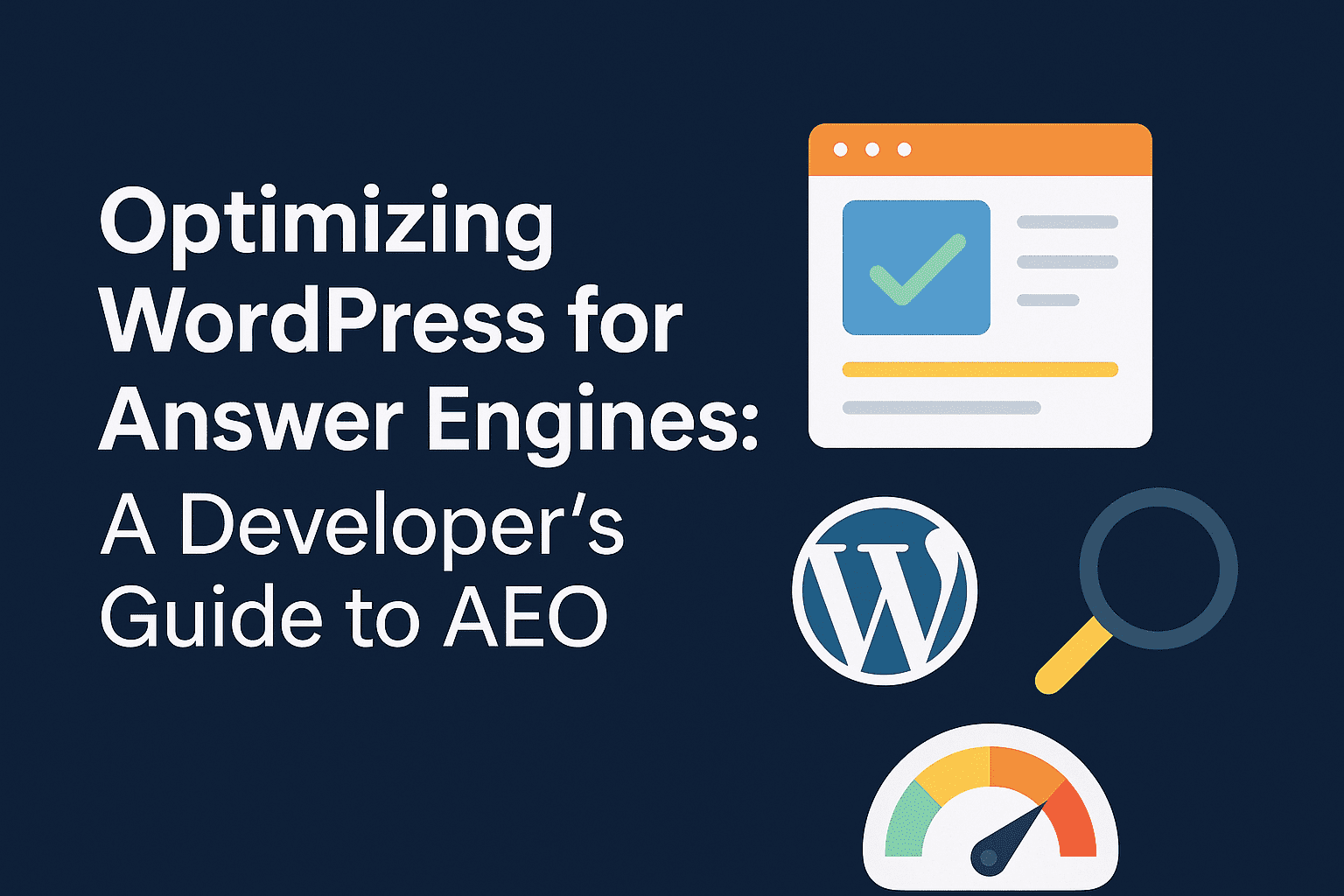Search has evolved. It’s no longer just about ranking on traditional SERPs (Search Engine Result Pages)—today, Answer Engines like Google’s Featured Snippets, SGE (Search Generative Experience), Bing Chat, and AI assistants are reshaping how content is discovered and consumed.
Table of Contents
If you’re developing a WordPress website in 2025, Answer Engine Optimization (AEO) should be baked into your planning from day one. Below are the key technical AEO factors developers and SEO strategists must consider.
1. Structured Data (Schema Markup)
Why it matters:
Structured data helps search engines understand your content and qualify it for enhanced search appearances like featured snippets and knowledge panels.
Implementation tips:
- Use plugins like Schema & Structured Data for WP or Rank Math to inject schema using JSON-LD.
- Focus on types like:
FAQPageHowToProductOrganizationArticleBreadcrumbList
- Validate with Google’s Rich Results Test.
2. Content Hierarchy and Semantic HTML
Why it matters:
A clear content hierarchy increases your chances of being selected for voice answers and featured snippets.
Best practices:
- Use proper heading tags (
<h1>to<h6>) in a logical, nested order. - Maintain a single
<h1>per page, usually the main title. - Use semantic HTML tags like
<main>,<article>,<section>, and<aside>in theme templates.
3. Answer-Oriented Content Format
Why it matters:
Search engines favor content that directly answers user queries.
Tips for developers and content teams:
- Present content using question headings followed by brief, direct answers.
- Include FAQ sections with appropriate schema.
- Use bullet lists, tables, and short paragraphs for clarity and skimmability.
4. Core Web Vitals and Page Speed
Why it matters:
Fast-loading websites improve user experience and are more likely to be featured in answer boxes.
What to optimize:
- Use caching plugins like WP Rocket or LiteSpeed Cache.
- Serve images in WebP format and implement lazy loading.
- Integrate a CDN like Cloudflare or BunnyCDN.
- Regularly test performance using PageSpeed Insights and GTmetrix.
5. Mobile-First and Accessibility-Ready Design
Why it matters:
Google uses mobile-first indexing, and accessible websites serve a wider audience—including voice and screen-reader users.
Checklist:
- Use a responsive theme with mobile-friendly layouts.
- Ensure legible font sizes, adequate spacing, and accessible tap targets.
- Implement ARIA labels and roles.
- Always add descriptive alt tags to images.
6. Crawlability and Index Optimization
Why it matters:
If search engines can’t crawl or interpret your site efficiently, your content won’t be considered for answer results.
Actions to take:
- Create and submit XML sitemaps to Google Search Console and Bing Webmaster Tools.
- Set up a clean robots.txt file to block sensitive paths like
/wp-admin/. - Use canonical tags to prevent duplicate content issues.
- Avoid excessive query strings and session parameters in URLs.
7. Knowledge Graph Signals
Why it matters:
Answer engines rely on knowledge graphs to connect facts and entities. Structured site identity data increases your visibility.
What to include:
- Add
Organizationschema with company name, logo, and social profiles. - Add
Authorschema to blog posts with structured author bio and links. - Link to authoritative third-party sources when appropriate.
8. Choosing the Right Theme and Plugins
Why it matters:
The foundation of your website must support clean code, schema integration, and fast load times.
What to look for:
- Use lightweight, SEO-friendly themes like Astra, GeneratePress, or Kadence.
- Avoid page builders that generate bloated HTML unless they support semantic markup.
- Choose plugins that integrate well with SEO frameworks and don’t conflict with structured data.
AEO is not just about adding Q&A content—it’s about creating machine-readable, user-intent-driven, and fast-loading content. As a WordPress developer, you play a crucial role in enabling content that search engines and AI tools can feature as trusted answers.
If you’re building for search in 2025 and beyond, you’re building for answers—so structure your site accordingly.






